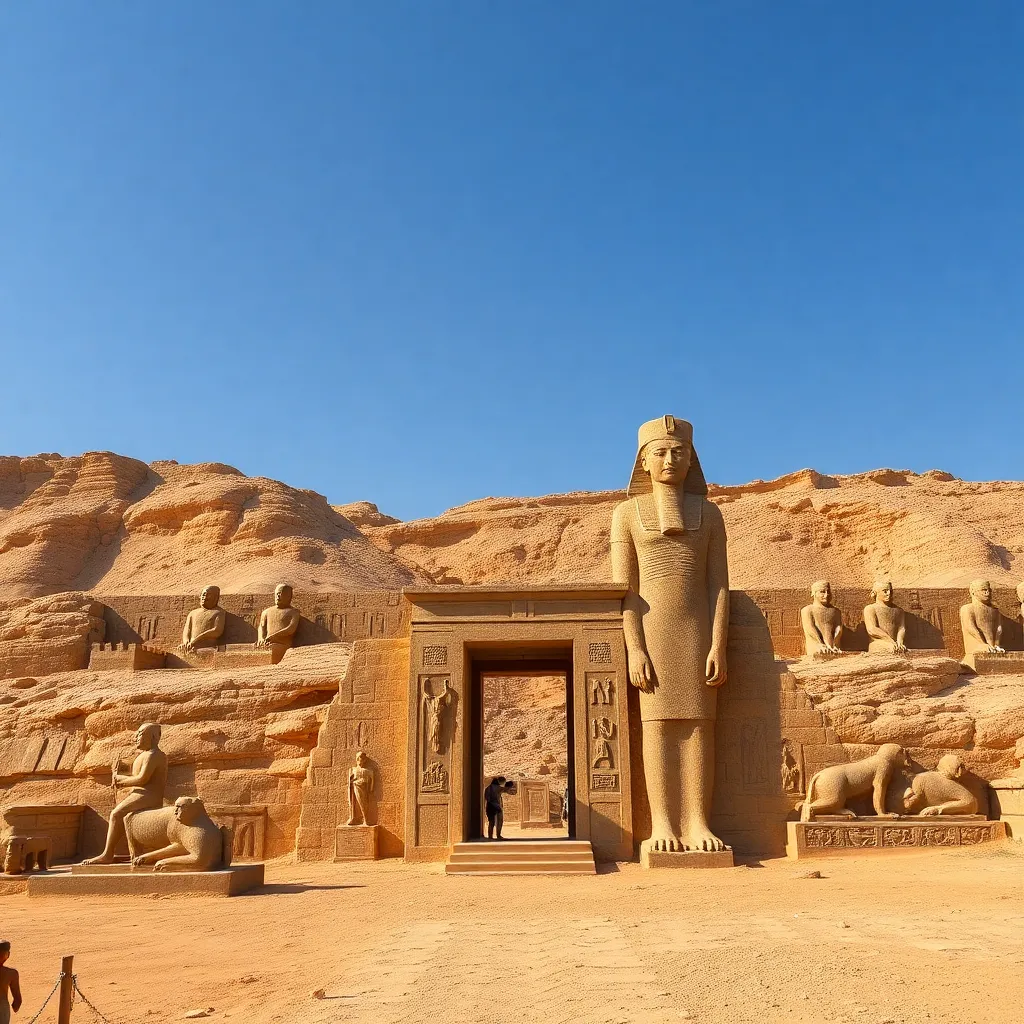Atenism and Its Cultural Legacy in Ancient Egypt
I. Introduction
Atenism, a religious movement that emerged during the reign of Pharaoh Akhenaten in the 14th century BCE, represented a significant departure from the traditional polytheistic beliefs of Ancient Egypt. This belief system centered around the worship of Aten, the sun disk, as the singular, all-powerful deity. The historical context of Ancient Egypt is rich and complex, and Atenism provides a unique lens through which we can understand the cultural and religious transformations of this ancient civilization.
Studying Atenism’s cultural legacy is crucial as it not only highlights the innovation in religious thought during Akhenaten’s reign but also reflects on how these changes influenced subsequent generations and their beliefs.
II. The Rise of Atenism
The historical background of Amenhotep IV, who later changed his name to Akhenaten, is essential to understanding the rise of Atenism. Ascending to the throne around 1353 BCE, Akhenaten initiated a radical shift in religious practices, moving away from the worship of a pantheon of gods to a more monotheistic approach centered on Aten.
Key tenets of Atenism included:
- The belief in Aten as the sole god and creator.
- The rejection of other deities, which were often depicted in traditional worship.
- A focus on personal, direct worship of Aten, rather than through intermediaries like priests.
This shift marked a significant transformation in Ancient Egyptian religion and culture, challenging established beliefs that had been in place for centuries.
III. The Worship of Aten
The worship of Aten revolved around the sun disk, which was seen as the source of life and sustenance. The representation of Aten as a radiant sun disk, extending its rays to humanity, emphasized its role as a giver of life.
Religious practices and rituals associated with Aten included:
- Offerings of food and incense to honor Aten.
- Daily prayers and hymns sung in praise of the sun.
- The construction of open-air temples to facilitate worship under the sun’s rays.
The significance of the sun in Ancient Egyptian culture cannot be overstated, as it was closely linked to concepts of life, rebirth, and the natural order of the universe. Atenism, therefore, represented not just a new religious doctrine but a reimagining of the very fabric of Egyptian spirituality.
IV. Akhetaten: The City of Aten
To solidify his new religious order, Akhenaten established a new capital city, Akhetaten (modern-day Amarna), dedicated to the worship of Aten. This city was designed with a focus on sunlight, featuring open temples and spaces that allowed the rays of the sun to permeate the structures.
Architectural innovations and urban planning in Akhetaten included:
- The construction of large temples with sunlit courtyards.
- Wide avenues that facilitated movement and access to the temples.
- Residential areas designed for the royal family and the elite, emphasizing the importance of Aten worship.
Cultural and artistic developments during Akhenaten’s reign were also notable, with a distinctive style of art emerging that emphasized realism and intimate family scenes, contrasting sharply with the idealized forms of traditional Egyptian art.
V. Atenism’s Impact on Art and Literature
Atenism brought about significant changes in artistic representation and styles, moving away from the conventional depictions of gods and pharaohs to more personal and humanistic portrayals. This can be seen in the artwork from Akhetaten, which often depicted Akhenaten, Nefertiti, and their children in intimate family settings.
Literature and poetry reflecting Atenist beliefs also flourished, with hymns dedicated to Aten showcasing the beauty and power of the sun. These literary works emphasized themes of light, creation, and divine presence.
In comparison with traditional Egyptian art forms, Atenist art was characterized by:
- Realism and emotional expression.
- Depictions of daily life and family interactions.
- A departure from formalized representations of deities.
This artistic revolution had lasting effects on the cultural landscape of Egypt, influencing subsequent artistic endeavors even after the decline of Atenism.
VI. The Decline of Atenism
Following Akhenaten’s death, several factors contributed to the decline of Atenism. The return to polytheism was a response to the societal and political instability that ensued after Akhenaten’s radical changes.
The restoration of polytheism was notably marked by:
- The ascension of Tutankhamun, who sought to reinstate the worship of the traditional pantheon.
- The dismantling of Akhetaten and the temples dedicated to Aten.
- A historical narrative that sought to erase Akhenaten’s legacy, often labeling him as a heretic.
Archaeological evidence supports the narrative of Atenism’s fall, showing the gradual restoration of traditional practices and the reestablishment of the priesthoods of other deities.
VII. Atenism’s Legacy in Later Egyptian Culture
Despite its decline, Atenism left a lasting legacy in subsequent religious practices and beliefs in Ancient Egypt. Elements of Atenist thought can be traced in the religious developments of later dynasties, suggesting a complex relationship between Atenism and the traditional polytheistic beliefs.
The reinterpretation of Atenism in later dynasties often involved:
- Integrating aspects of Atenism into the worship of other deities.
- Revisiting the artistic styles that emerged during Akhenaten’s reign.
- Recognition of Aten as a significant deity within the broader context of Egyptian religion.
Modern perspectives on Atenism further highlight its cultural significance, with scholars recognizing it as an early form of monotheism that influenced later religious thought in the region.
VIII. Conclusion
In summary, Atenism’s key contributions to Ancient Egyptian culture encompass a radical shift in religious practices, innovative artistic expressions, and unique urban planning. Its legacy continues to resonate in contemporary studies of religion and art, highlighting the complexity of Ancient Egyptian belief systems.
As we reflect on the lasting impact of Atenism, it becomes evident that further research into its lesser-known aspects can provide deeper insights into the cultural and spiritual dynamics of Ancient Egypt.




